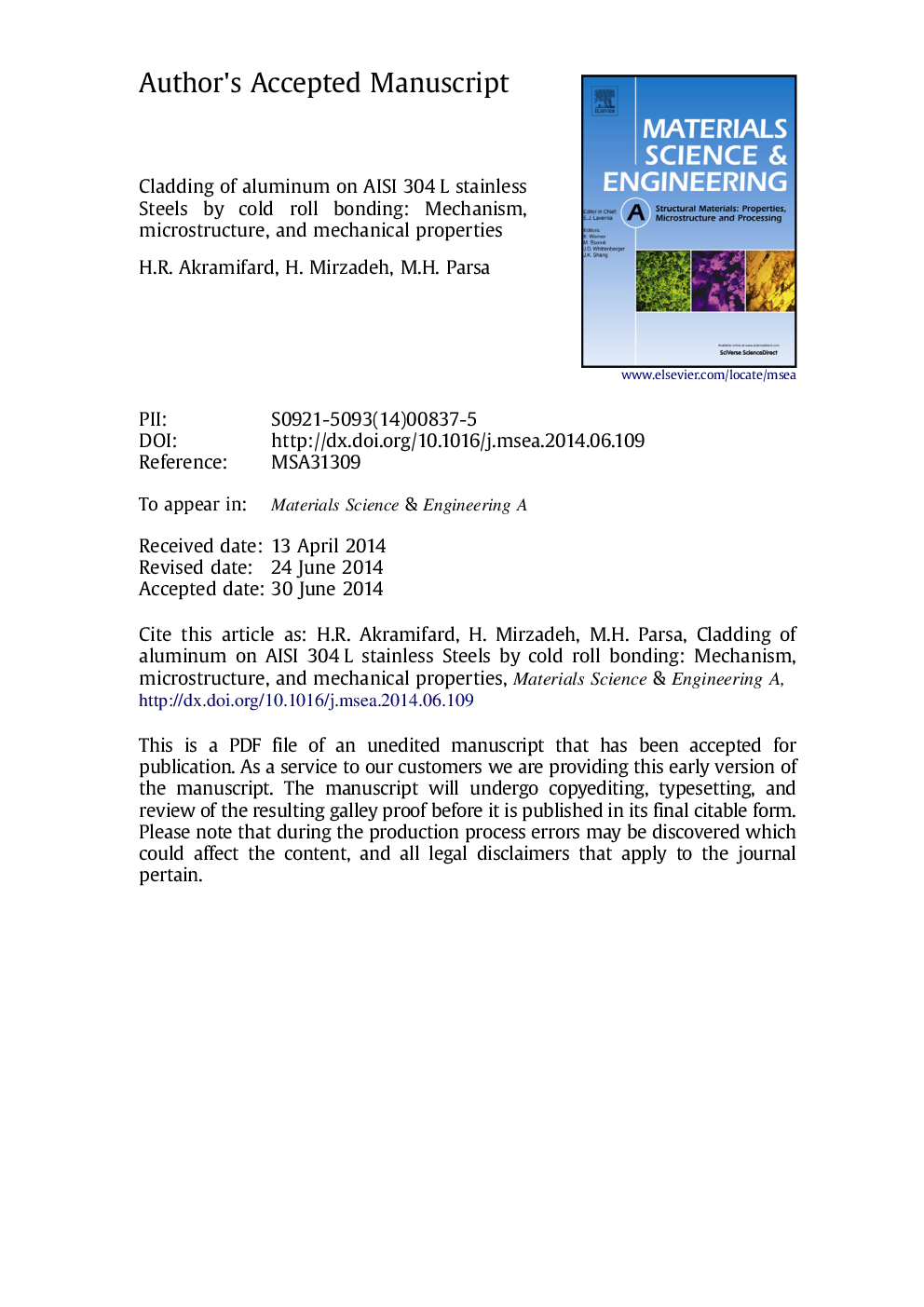| کد مقاله | کد نشریه | سال انتشار | مقاله انگلیسی | نسخه تمام متن |
|---|---|---|---|---|
| 7980486 | 1514730 | 2014 | 36 صفحه PDF | دانلود رایگان |
عنوان انگلیسی مقاله ISI
Cladding of aluminum on AISI 304L stainless steel by cold roll bonding: Mechanism, microstructure, and mechanical properties
دانلود مقاله + سفارش ترجمه
دانلود مقاله ISI انگلیسی
رایگان برای ایرانیان
کلمات کلیدی
موضوعات مرتبط
مهندسی و علوم پایه
مهندسی مواد
دانش مواد (عمومی)
پیش نمایش صفحه اول مقاله

چکیده انگلیسی
The AA1050 aluminum alloy and AISI 304L stainless steel sheets were stacked together to fabricate Al/304L/Al clad sheet composites by the cold roll bonding process, which was performed at temperatures of ~100 and 23 °C to produce austenitic and austenitic-martensitic microstructures in the AISI 304L counterpart, respectively. The peel test results showed that the threshold reduction required to make a suitable bond at room temperature is below 10%, which is significantly lower than the required reduction for cold roll bonding of Al sheets. The tearing of the Al sheet during the peel test signified that the bond strength of the roll bonded sheets by only 38% reduction has reached the strength of Al, which is a key advantage of the developed sheets. The extrusion of Al through the surface cracks and settling inside the 304L surface valleys due to strong affinity between Al and Fe was found to be the bonding mechanism. Subsequently, the interface and tensile behaviors of three-layered clad sheets after soaking at 200-600 °C for 1 h were investigated to characterize the effect of annealing treatment on the formation and thickening of intermetallic compound layer and the resultant mechanical properties. Field emission scanning electron microscopy, X-ray diffraction, and optical microscopy techniques revealed that an intermediate layer composed mainly of Al13Fe4, FeC and Al8SiC7 forms during annealing at 500-600 °C. A significant drop in tensile stress-strain curves after the maximum point (UTS) was correlated to the interface debonding. It was found that the formation of intermediate layer by post heat treatment deteriorates the bond quality and encourages the debonding process. Moreover, the existence of strain-induced martensite in clad sheets was found to play a key role in the enhancement of tensile strength.
ناشر
Database: Elsevier - ScienceDirect (ساینس دایرکت)
Journal: Materials Science and Engineering: A - Volume 613, 8 September 2014, Pages 232-239
Journal: Materials Science and Engineering: A - Volume 613, 8 September 2014, Pages 232-239
نویسندگان
H.R. Akramifard, H. Mirzadeh, M.H. Parsa,